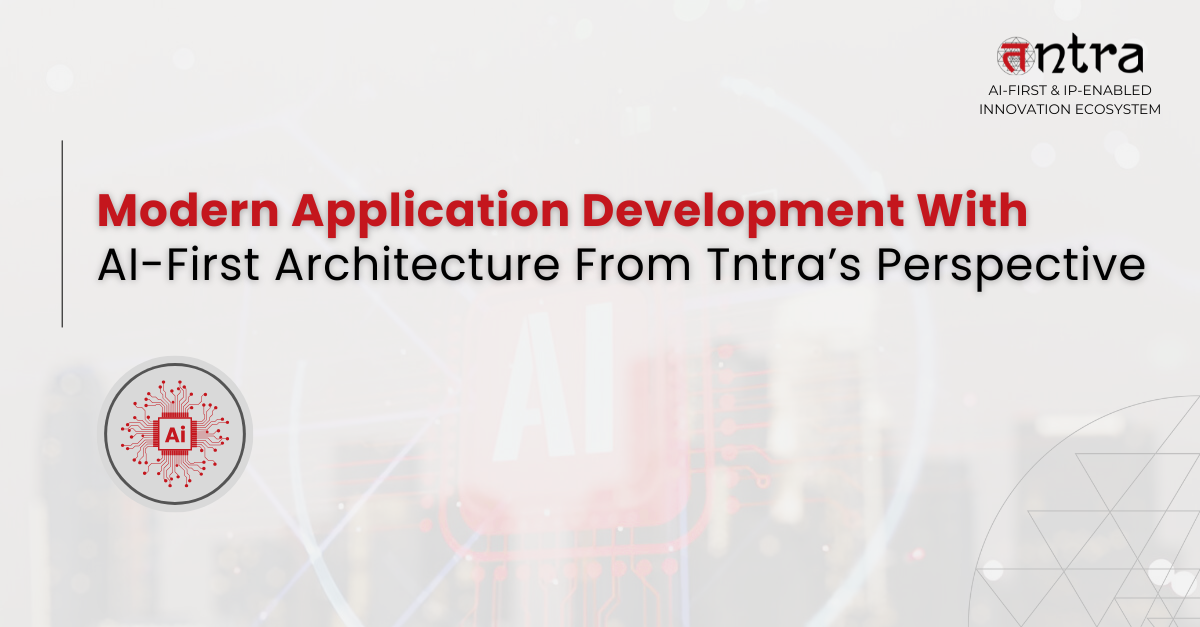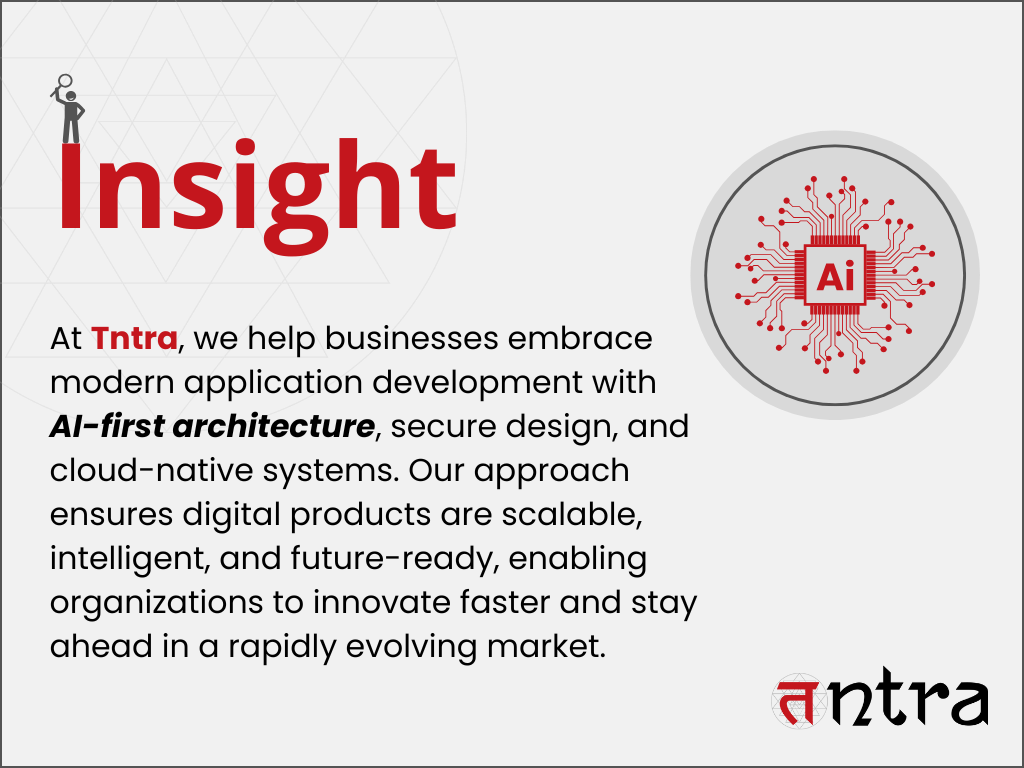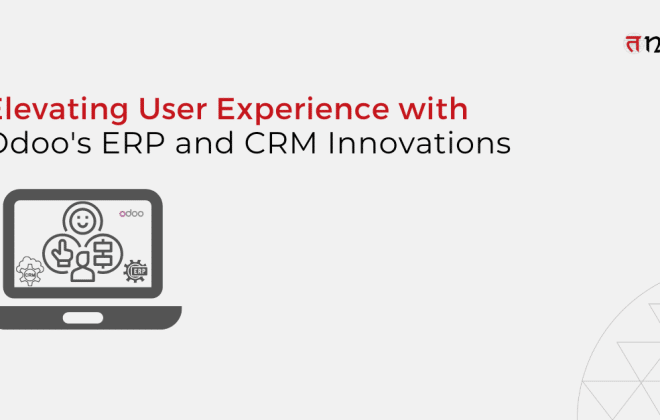
Modern Application Development with AI-First Architecture from Tntra’s Perspective
Table of Contents
ToggleThis article is a human-first guide to modern application development, showing how businesses can use AI-first architecture, cloud-native systems, and machine learning in application design to stay ahead. It breaks down complex ideas into simple, actionable strategies for building smarter, more scalable apps. From product strategy to security, from faster launches to future growth — it’s all about doing tech the right way. Whether you’re starting fresh or upgrading legacy systems, this is your blueprint for innovation.
Continue reading to learn more.

Most apps today feel… old. Even the new ones.
They load slowly. They don’t understand what the user wants. And behind the scenes? The systems running them are clunky, fragile, and stitched together with workarounds.
If that sounds familiar, you’re not alone. Most growing companies are struggling to keep up, not because they lack talent, but because their foundations are outdated.
The good news? A better way is not just possible. It’s already here.
Welcome to modern application development, powered by smarter thinking, faster systems, and secure, scalable architecture that’s built for the real world.
But here’s the thing: getting there takes more than tools. It takes the right approach. And it starts with a mindset shift.
Why Most Applications Fail to Scale (And How Modern Development Solves It)
Let’s start with the obvious: the world has changed.
Your users expect apps that respond instantly, work seamlessly, and offer a little magic. Your team needs systems that are flexible, fast, and actually enjoyable to work with. And your business? It can’t afford downtime or guesswork.
That’s where modern application development comes in.
This isn’t about buzzwords or frameworks. It’s about solving real problems with smarter systems that:
- Deliver updates weekly (not yearly)
- Learn and improve continuously
- Handle traffic spikes without breaking
- Are easier to test, secure, and scale
It’s the kind of development that’s built for the speed of business today.
And if you’re already thinking about your next big product move, or how to upgrade what you have, this is where your digital transformation strategy needs to begin.
The Core Building Blocks of Modern Application Development
Now, before we dive into the exciting stuff, let’s talk about the essentials.
Every successful digital product today rests on a few solid pillars:
- A strong cloud-native application architecture.
- Clear microservices and AI integration for modular growth.
- Secure, responsive design that scales smoothly.
- Built-in data processing for smarter decisions.
- A clear plan from the start, not patches later.
And let’s be clear: none of this is plug-and-play.
You need partners who don’t just build, they engineer. That’s where a software product engineering company makes a world of difference. Especially one that offers technology consulting solutions to guide you through the maze.
They don’t just write code. They help you think long-term, avoid dead ends, and move faster without losing control.
From Idea to Execution: What Real Software Innovation Looks Like
Here’s a simple truth: you can’t bolt on innovation later. You have to build it in from the beginning.
This is where a smart software product engineering consulting partner can help you bring it all together.
Let’s say you’re launching a new platform for retail logistics. With modern application development, your team can:
- Break the platform into manageable pieces using microservices.
- Use cloud-native infrastructure to scale up during high shopping seasons.
- Process customer behavior in real-time to improve delivery accuracy.
- Protect every part of the system with built-in security controls.
And you’re not guessing how long features will take to ship. You already know, because the system was designed that way from day one.
That’s the beauty of modern app development frameworks: they give your product room to grow, change, and surprise you.
The “AI-First” Architecture Shift: What It Really Means for Modern Applications
Now, let’s talk about this new term everyone’s throwing around, AI-first application development.
At its core, it’s not about adding fancy features. It’s about designing smarter systems from the ground up.
When you go with an AI-first architecture, you’re creating software that:
- Knows how to respond to users based on past behavior
- Can adapt in real time without someone manually changing things
- Gets more accurate, faster, and helpful over time
- Learns from every interaction and makes better decisions
So instead of waiting for reports and reacting slowly, your systems act proactively. They see what’s happening and adjust, whether it’s recommending a better offer to a user or flagging a potential system issue before it blows up.
It’s not magic. It’s just a thoughtful AI-first digital transformation, done the right way.
Why Smart Software Architecture Matters More Than Ever
The real power here lies in your AI-driven architecture, or to put it simply, a software foundation that’s constantly working smarter, not harder.
This kind of setup lets your systems:
- Handle data better
- Respond to users faster
- Secure information more intelligently
- Integrate with new tools or services without breaking
And when done right, it supports all the things you want to build later, without forcing a rebuild every year.
This is why AI-based system design is becoming the gold standard. It helps your product stay relevant in a world where tech changes by the week.
Real-World Scenario: AI-First Application Development in Action
Let’s break this down into a real example.
Imagine you’re building a travel app.
With the old way of working, your developers build each feature manually. You can personalize to some extent, but it’s mostly guesswork. Updates are slow, and every new request takes weeks.
Now let’s flip the switch.
With modern application development and AI-first architecture, your app can:
- Track users’ preferences based on past trips.
- Offer location-based suggestions in real time.
- Monitor flight delays and automatically notify customers.
- Keep all this running smoothly and securely, even during peak seasons.
And your team? They’re not working harder. They’re working smarter, because the system does half the thinking.
Security and Scalability: The Non-Negotiables in Modern App Development
You can’t afford to worry about security after launch. Or scalability when it’s too late.
That’s why a truly modern system always includes:
- Secure-by-design principles
- Role-based access
- Real-time threat detection
- Scalable microservices that grow with demand
When paired with a strong artificial intelligence architecture, your platform doesn’t just react to problems, it prevents them.
And the best part? You don’t need an army of engineers to manage it all. You just need a partner who’s been there before, ideally a software product engineering company that knows how to build, secure, and scale from day one.
How Modern Application Development Impacts Business Outcomes
This isn’t just a tech play. It’s a business move.
Let’s talk bottom line. Companies that embrace AI in application development and build using a modern application development approach see benefits like:
- Faster product launches
- Happier customers
- Lower cost of ownership
- Easier updates and fewer bugs
- Stronger data for smarter decisions
You move from firefighting to forward-thinking.
And your team? They stop drowning in maintenance and start focusing on growth.
The Role of Machine Learning in Application Design
Machine learning is no longer for tech giants. It’s for everyone.
If you’re still building applications without thinking about how they learn or improve over time, you’re leaving value on the table.
When you embrace machine learning in application design, even simple systems can:
- Understand patterns in user behavior.
- Optimize themselves automatically.
- Get better at delivering what your users actually want.
And all of this can be built into your system through your AI application architecture, again, not as an add-on, but as part of the core design.
Final Thoughts: Build Smart, Not Just Fast
Innovation isn’t about doing more. It’s about doing it better.
If you’re serious about growth, longevity, and building digital experiences people actually love, then you need to rethink how you build from the ground up.
That means:
- Start with a clear digital transformation strategy.
- Choose technology consulting solutions that support long-term growth.
- Partner with a software product engineering consulting firm that’s done this before.
- Think in terms of AI-first architecture, secure systems, and modular frameworks.
- Design products that don’t just work today, they evolve tomorrow.
Because let’s face it, nobody’s impressed by an app that feels five years old the day it launches.
Build smarter. Build stronger. And above all, build for the future.
Ready to Build Smarter with AI-First Architecture?
Modern application development isn’t just about faster code or trendy frameworks — it’s about creating secure, scalable, and intelligent systems that evolve with your business.
At Tntra, we help enterprises and startups alike adopt AI-first architecture, cloud-native design, and machine learning integration to future-proof their digital products. From strategy to execution, we partner with you to build applications that don’t just keep up — they lead the way.
Let’s explore how we can help you engineer the future of your applications.
Contact Tntra today to start your journey toward smarter, modern application development.
FAQs
What is AI-first architecture in modern application development?
AI-first architecture means designing your app from the ground up to use data, learning, and intelligent decision-making as core features, not add-ons. It’s a smarter, more adaptive way to build modern software.
How does AI-first architecture differ from traditional software architecture?
Traditional architecture focuses on fixed logic and static workflows. AI-first architecture, on the other hand, builds flexibility into the system, so it can learn, adjust, and improve on its own over time.
What are the benefits of building applications with an AI-first approach?
Apps built with an AI-first approach are more responsive, personalized, and efficient. They adapt to user behavior, reduce manual work, and get better as they’re used, making your product smarter over time.
Which technologies are commonly used in AI-first application development?
AI-first development typically uses tools like Python, TensorFlow, PyTorch, cloud platforms like AWS or GCP, data pipelines, and modern app frameworks with machine learning integration.
How can AI-first architecture improve application scalability and performance?
It breaks down the app into intelligent, modular parts that scale independently. As usage grows, your app responds faster, handles more data, and delivers a smoother experience without slowing down.





